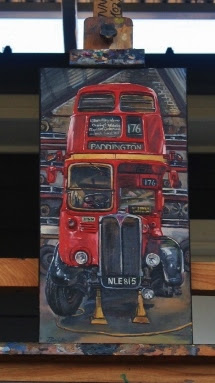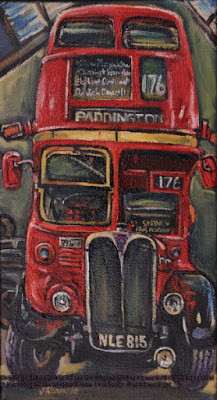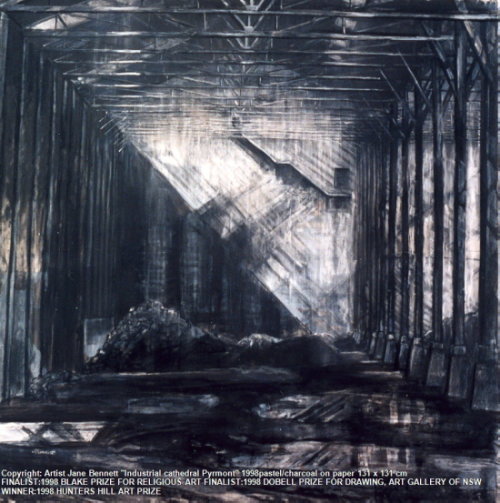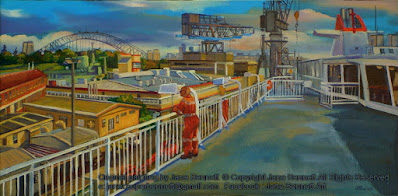Today's painting on the deck gallery is another canvas painted at the Bus Museum in September 2017.
 |
| BUS 7 London bus' 2017 oil on canvas 51 x 25.5cm Available |
The London bus is having its wheels checked.
 |
| On the easel at Sydney Bus Museum BUS 7 London bus' 2017 oil on canvas 51 x 25.5cm Available |
After World War II, London Transport bought over 6,000 double deckers, all built to a
standardized design, mostly the AEC Regent III RT type, similar to the pre-war AEC buses.
The first prototype, known as the AEC Routemaster, was completed in September 1954 and the last one was delivered in 1968.
The first Routemasters entered service with London Transport in February 1956 and the last withdrawn from regular service in December 2005, although one heritage route still operates in central London. The Routemaster outlasted several of its replacements in London, and even survived the privatization of the London Transport bus operators .
The first prototype, known as the AEC Routemaster, was completed in September 1954 and the last one was delivered in 1968.
The first Routemasters entered service with London Transport in February 1956 and the last withdrawn from regular service in December 2005, although one heritage route still operates in central London. The Routemaster outlasted several of its replacements in London, and even survived the privatization of the London Transport bus operators .
 |
BUS 7A Study for London Bus, Sydney Bus Museum 2019 oil on canvas 23 x 13cmAvailable BUS 7 London bus' 2017 oil on canvas 51 x 25.5cm Available In front of my patient model at Sydney Bus Museum |
The Routemaster had a pioneering design using lightweight aluminium and techniques developed in aircraft production during World War II. It also introduced innovative design features such as independent front suspension, power steering, a fully automatic gearbox and power-hydraulic braking, for the first time ever on a bus. Drivers found the Routemaster surprisingly light and nimble compared with earlier designs.
One of their main advantages was that the body could be lifted off the chassis during overhaul.The London fleet contained more bodies than chassis, as overhauling the body took longer than the chassis. A bus could go in for overhaul in the morning, and come out that afternoon with a different body.
In 2006, the Routemaster was voted one of Britain's top 10 design icons which included Concorde, Mini, London tube map, World Wide Web and the K2 telephone box.

BUS 7A Study for London Bus,
Sydney Bus Museum
2019 oil on canvas 23 x 13cm
This was my first much smaller study of the London bus
The Museum's bus, AEC RT - 3708, was registered NLE-815, and started life in May 1953 with a 'green'
Weymann 8545 body, the
most common type.
I don't know what it is about the colour, but I can't imagine a London bus in any other colour than red. Must make it go faster!
It had 3 overhauls during its London
Transport career - in 1956, 1961, and it didn't get fitted with the iconic
'red' body until its final overhaul in 1965.
It ended its days at Southall garage, then was sold in March 1977, imported to Australia in 1984 and purchased by the Museum in 1989.

BUS 7 London bus' 2017
oil on canvas 51 x 25.5cm
All information is courtesy of the experts of the Sydney Bus Museum
Related posts


















